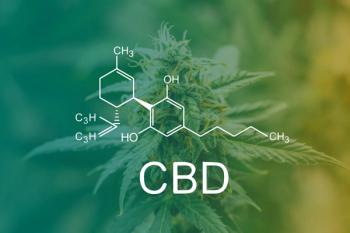
Heavy Metals Detection and Laboratory Practices the Focus of High-Level Workshop
Scientists and testing experts discuss contaminant issues in the wake of a widening vaping emergency
More than 60 federal, state, and private analytical testing experts along with analytical product development professionals convened at a hotel meeting room in Columbia, Maryland on October 3, where nine presenters discussed issues related to methods of analyzing heavy metals in cannabis and hemp.
The all-day workshop, “Optimizing Performance and Maximizing Productivity When Measuring Heavy Metals in Cannabis and Hemp by Inductively Coupled Plasma Mass Spectrometry (ICP-MS),” was the brainchild of Robert Thomas, an independent science consultant and writer who has worked in the field of trace element analysis for more than 40 years, and has written over 100 publications on trace element analysis using atomic spectroscopic techniques.
“This workshop was my way of giving back to the industry,” said Thomas. “I wanted to see if my research over the past six months could be useful. Heavy metals is not a topic that is discussed a lot in the industry. It’s almost as if it’s below the radar. So I feel that the more we can get out about the issues of heavy metals will lead to a safe product.”
Thomas worked with Lori Dodson, the deputy director of laboratory compliance for the Maryland Medical Cannabis Commission, to help organize and manage the workshop.
In addition to Thomas, who provided background and applications information about ICP-MS, speakers included Jonathan Peters, with Shimadzu Corporation, a precision instrument manufacturer, discussing methods for analyzing cannabis using ICP-MS; Patti Atkins, from Spex CertiPrep, a manufacturer of certified reference materials (CRM), talking about laboratory work details; Laura Lawlor, from Milestone, Inc., manufacturers of specialty laboratory equipment, presenting information about microwave sample preparation; Dr. Ryan Brennan and Justin Masone, with Glass Expansion, manufacturers of spectrometer components, discussing maintenance of sample introduction systems; Dr. Steven Pappas, from the Tobacco Inorganics Group of the Centers for Disease Control and Prevention (CDC), who talked about testing electronic nicotine delivery vaping devices; Lawrence Neufeld, with Spectron, Inc., a cone manufacturer, discussing ICP-MS cone maintenance; and Dr. Melissa Phillips, from the Chemical Sciences Division of the National Institute of Standards and Technology (NIST), who talked about quality assurance programs and CRM for cannabinoids.
Atkins, a research and development applications chemist for Spex CertiPrep as well as a former laboratory manager for the company, said that most laboratory people use what she called “tribal knowledge,” or certain habits of practices used in laboratories. “There is this history of knowledge about how to clean a syringe, for example. Some of it has value,” she said.
But that is not the best way to run a laboratory. She explained that even a clean room can have random, or fluctuating, errors. “It’s not possible to eliminate all of the sources of error, but you can calculate for that random error,” said Atkins.
Methods for quality management of cannabis are up in the air right now, she said. “There are official mandated methods from the FDA and EPA and things like that,” she says. “But there are problems with getting those. Then there are consensus or volunteer methods, such as ASTM and USP. Sometimes the consensus method becomes the official method, and with cannabis, that is probably going to be the way it happens. By the time the U.S. government decides what it is going to do, with all these consensus organizations that have already published their methods, the government will probably pull from that pool of methods and synthesize them together to make a method that makes sense.”
Pappas began his presentation noting that the same types of devices used for vaping tobacco are used for cannabis related products.
In aerosol transfer devices, like pods for Juul, the metals found in them do not come from the liquids, he said. “What we found in these older devices, is that the more corrosion in the device, the more metals get transported into the liquids. The metals come from the device as they corrode internally, not the liquids,” explained Pappas. “It settles the matter at least for nicotine transport devices.”
In nicotine vapes, the electrical contacts, which are brass or copper, make contact with the battery externally and with the solution internally. “While this is predominantly about tobacco, the same thing is true with the cannabis-related devices,” said Pappas.
Pappas also said that black market cannabidiol (CBD) vaping products are using hemp seed oil, cannabis seed oil, and even vegetable oil to dilute their extract. “There are some differences because you will not usually find a tobacco-related device for nicotine with these oils in them.”
There are still a lot mysteries around what is causing illnesses and deaths from the vaping crisis as discussed at the
Pappas said that he would be like to be able to obtain samples of vapes from the black market for testing because that’s where the problem seems to be coming from. “One would want to study those devices, you would imagine, and I would too,” Pappas says. “The CDC is being called on to address this crisis. But they have no funds for it. So we are kind of coasting on what we have.”
The last presentation of the day came from Phillips with NIST. “The U.S. landscape is very complicated,” she said. “The biggest challenges for now is to try to support the needs of each state and prepare for the nationwide legalization of cannabis.”
NIST has also heard from a lot of producers of cannabis that, depending on what laboratory is used, a cannabis producer can get different results. “Labs have actually marketed themselves to give the answers that growers want,” said Phillips.
NIST is getting requests from everyone about targets for cannabis CRM materials. “Stakeholders want all of these things measured in cannabis, such as cannabinoids, residual solvents, heavy metals, microorganisms, pesticides, yeast and mold,” said Phillips. “The question is where do we begin? We are hoping to get going on heavy metals soon.”
For now, she said, NIST recommends laboratory analysts and researchers develop their own in-house reference materials, which, over time, would help them gain confidence that their procedures are working.
References:
https://www.cdc.gov/mmwr/volumes/68/wr/mm6839e1.htm https://www.nejm.org/doi/full/10.1056/NEJMc1913069#article_supplementary_material
David Hodes is is the former managing editor of Cannabis Science and Technology. He has written for many cannabis publications, and organized or moderated sessions at national and international cannabis trade shows. He was voted the 2018 Journalist of the Year by Americans for Safe Access, the world’s largest medical cannabis advocacy organization. Direct correspondence to:
Newsletter
Unlock the latest breakthroughs in cannabis science—subscribe now to get expert insights, research, and industry updates delivered to your inbox.




